You are here
New Releases
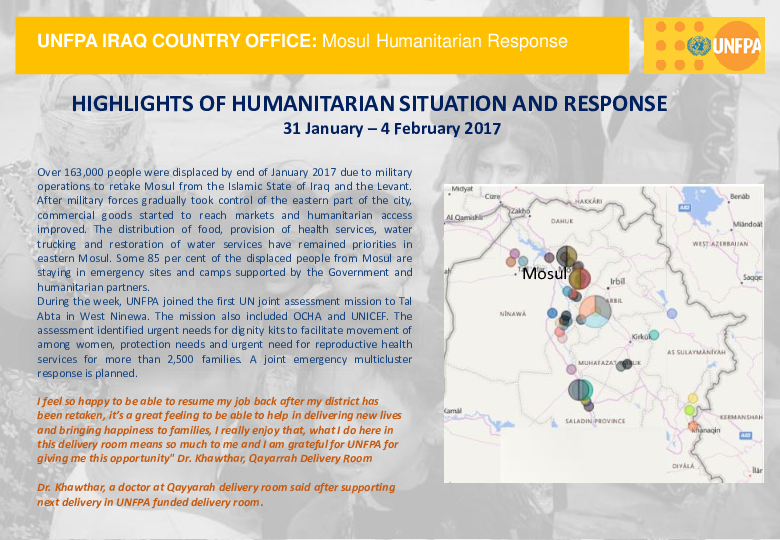
UNFPA IRAQ COUNTRY OFFICE: Mosul Humanitarian Response
HIGHLIGHTS OF HUMANITARIAN SITUATION AND RESPONSE 31 January – 4 February 2017
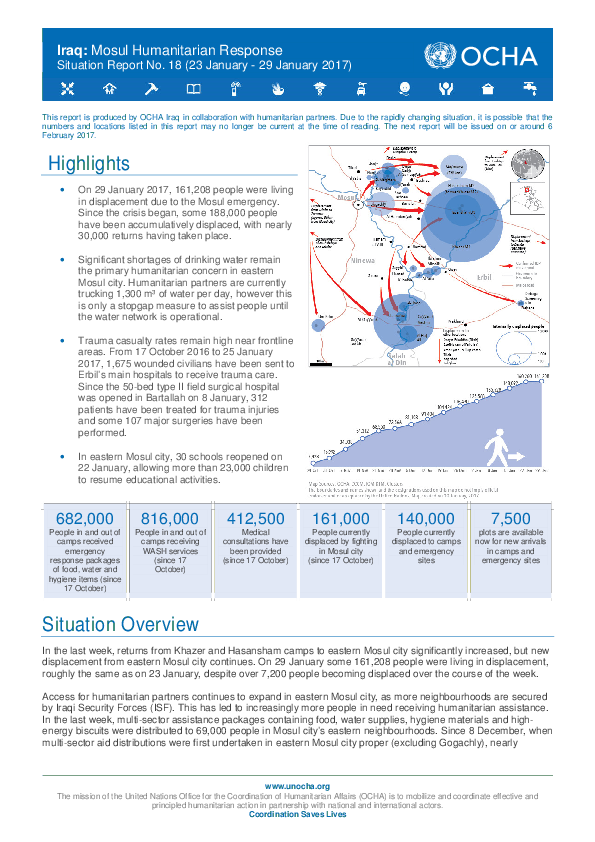
Iraq: Mosul Humanitarian Response Situation Report No. 18 (23 January - 29 January 2017)
On 29 January 2017, 161,208 people were living in displacement due to the Mosul emergency.Since the crisis began, some 188,000 people have been accumulatively displaced, with nearly 30,000 returns having taken place.
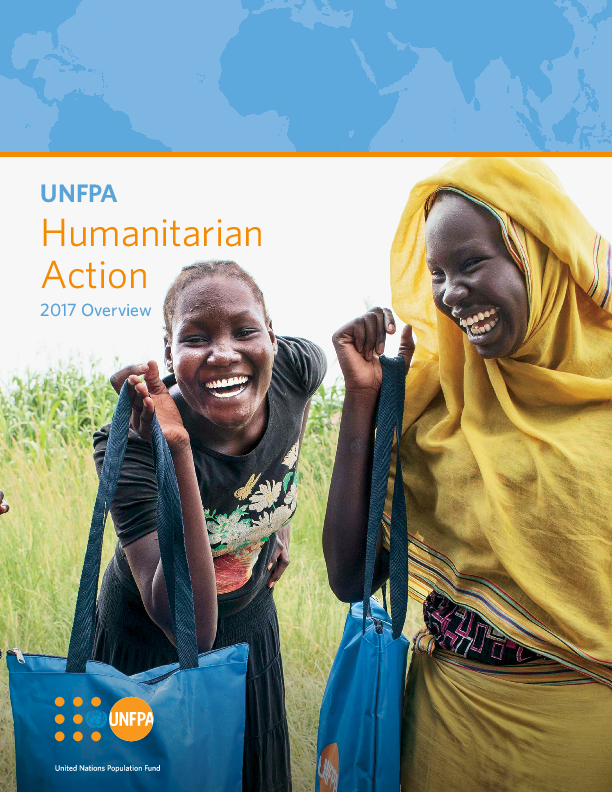
UNFPA Humanitarian Action 2017 Overview
Today more than 75 per cent of people affected by humanitarian crises are women and children. And adolescents aged 10-19 years constitute a significant proportion of the population in many conflict and post-conflict settings.
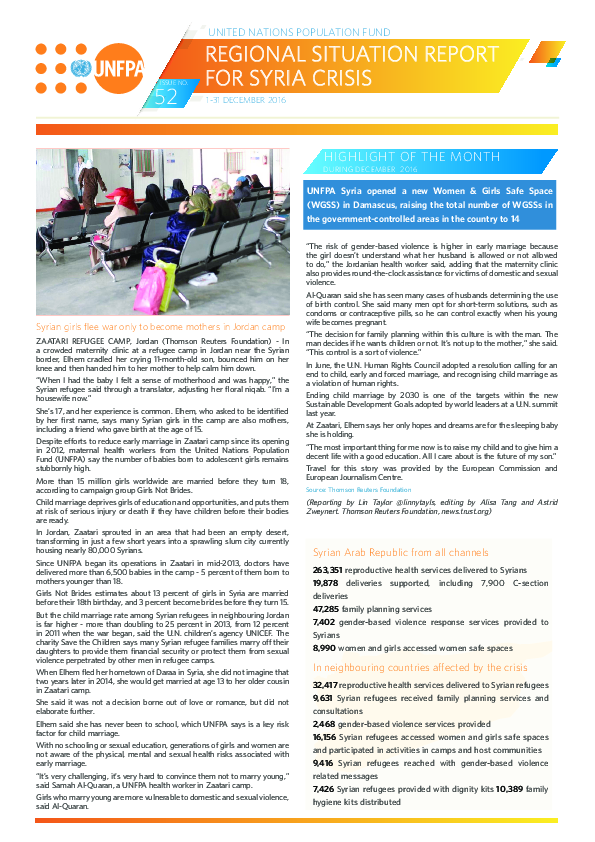
Regional Situation Report for Syria Crisis #52
UNFPA and partners are scaling up efforts to empower and improve the lives of Syrian women and youth and impacted communities inside Syria and in host countries, including by advocating for human rights and gender equality, to better cope with and recover from the crisis.
UNFPA response in Yemen
Situation Overview
More than 19 months of the conflict in Yemen has left an estimated 18.8 million people in need some kind of assistance or protection in order to meet their basic needs, including 10.3 million who are in acute need. This represents an increase of almost 20 per cent since late 2014, according to the 2017 Humanitarian Needs Overview, released in November 2016. The report also indicates that an estimated 14.8 million people lack access to basic healthcare, including 8.8 million living in severely under-served areas. Medical materials are in chronically short supply, and only 45 per cent of health facilities are functioning.
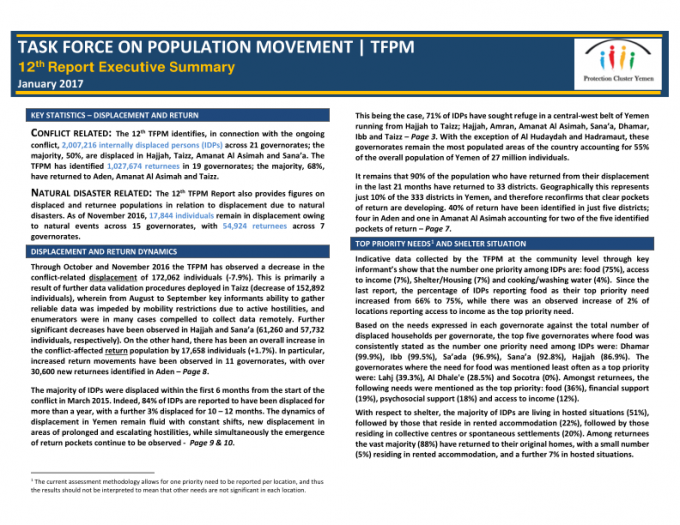
Yemen: Task Force on Population Movement (TFPM( - 12th Report Executive Summary
This is the 12th report of the Task Force on Population Movement (TFPM), which is a Technical Working Group of the Yemen Protection Cluster. The report details the latest snapshot on displacement and return in Yemen providing indicative findings related to displacement/return trends, area of origin, duration of displacement, shelter situation and top priority needs.
The data used for the 12th report was collected through October and November, 2016. The TFPM collects data in monthly cycles to monitor trends and provide a further comparative basis for analysis. For this reason, since the publication of the 11th report there have been two ‘rounds’ of data collection supporting the validation of the statistics published in this report.

Iraq: Mosul Humanitarian Response
Situation Report No. 14 (26 December 2016-1 January 2017)
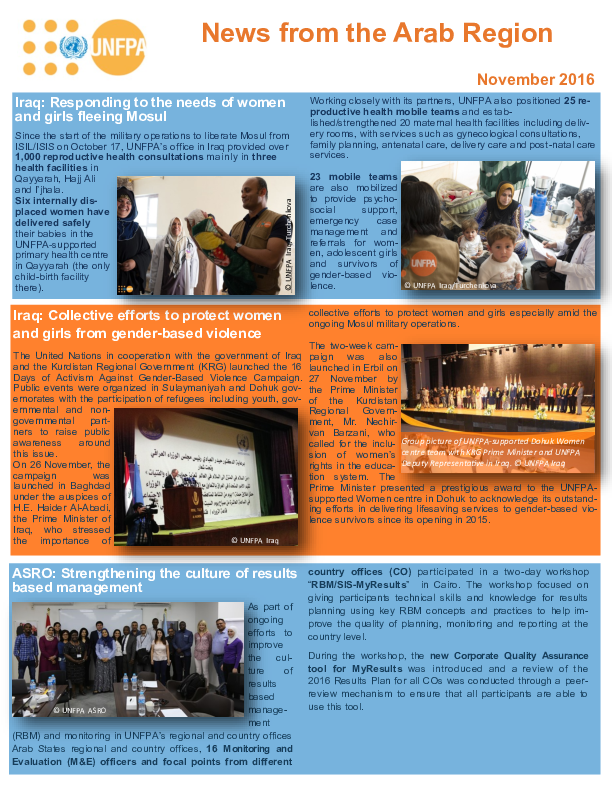
News from the Arab Region
Highlights of UNFPA work and humanitarian response in Iraq, Yemen, Sudan, Libya, Palestine, Tunisia, Lebanon, Syria, Algeria and Somalia, November 2016.

Midwives on the front line
Humanitarian crises, and the associated population displacement, are a large and growing problem across the globe. Countries in the Arab States region feature prominently in global statistics for fragility and humanitarian crises: according to the United Nations Refugee Agency (UNHCR), in 2015 40% of the world’s refugees, internally displaced persons and asylum seekers originated from this region, and countries in this region host 34% of the world’s forcibly displaced population. These statistics underline the urgent need for action, both in reaction to current crises and in terms of building resilience to possible future crises.
UNFPA in the Arab Region: Responding to Humanitarian Emergencies
Even under normal conditions, reproductive health issues are a leading cause of death and illness among women of childbearing age. But when a crisis strikes, skilled birth attendance and emergency obstetric care often become unavailable, exacerbating the vulnerability of pregnant women. Moreover, during conflicts, natural disasters and other emergencies, plans for a humanitarian response can easily lack adequate services for the immense sexual and reproductive health (SRH) needs among any affected population. Women face other threats as well. The absence of health services and other factors can increase the risks of contracting HIV and other sexually transmitted infections. And the breakdown of protection systems often leads to a rise in gender-based violence (GBV). In addition, the burden of care women assume for children and others can make it difficult for them to take proper care of themselves. Women may neglect their own needs as they care for their families and neighbours.